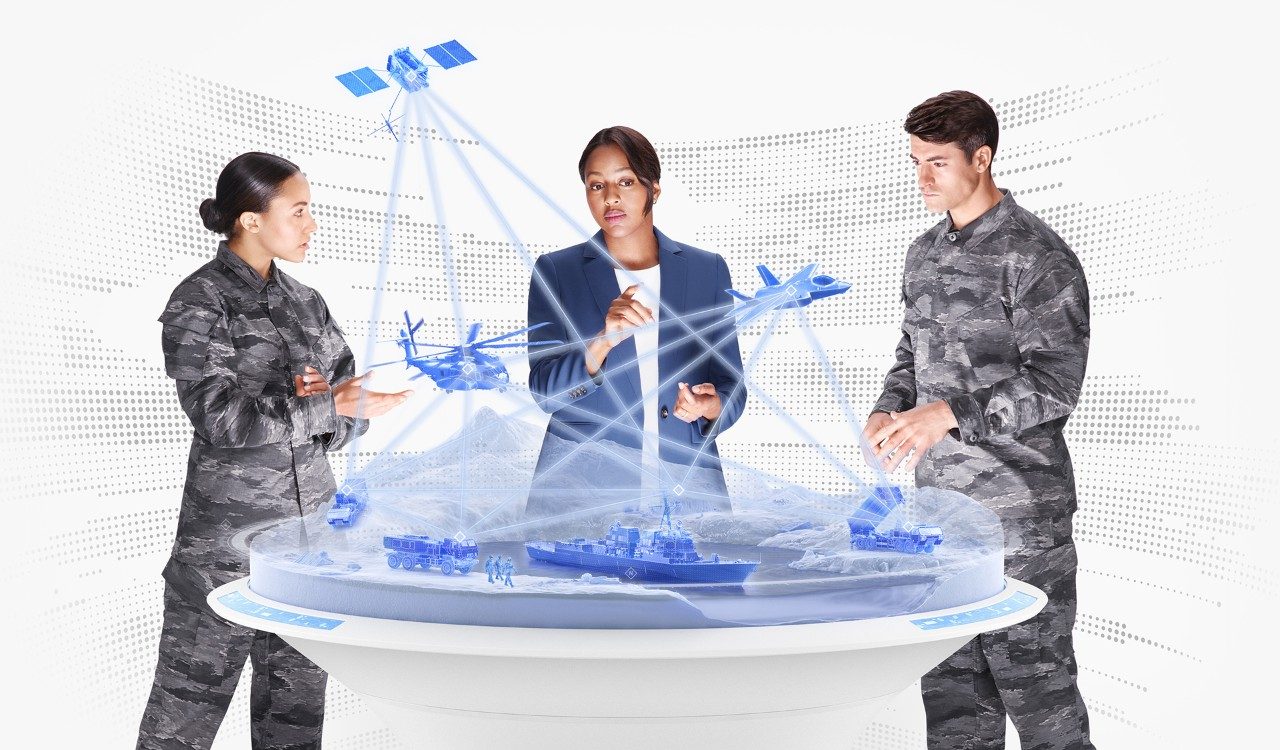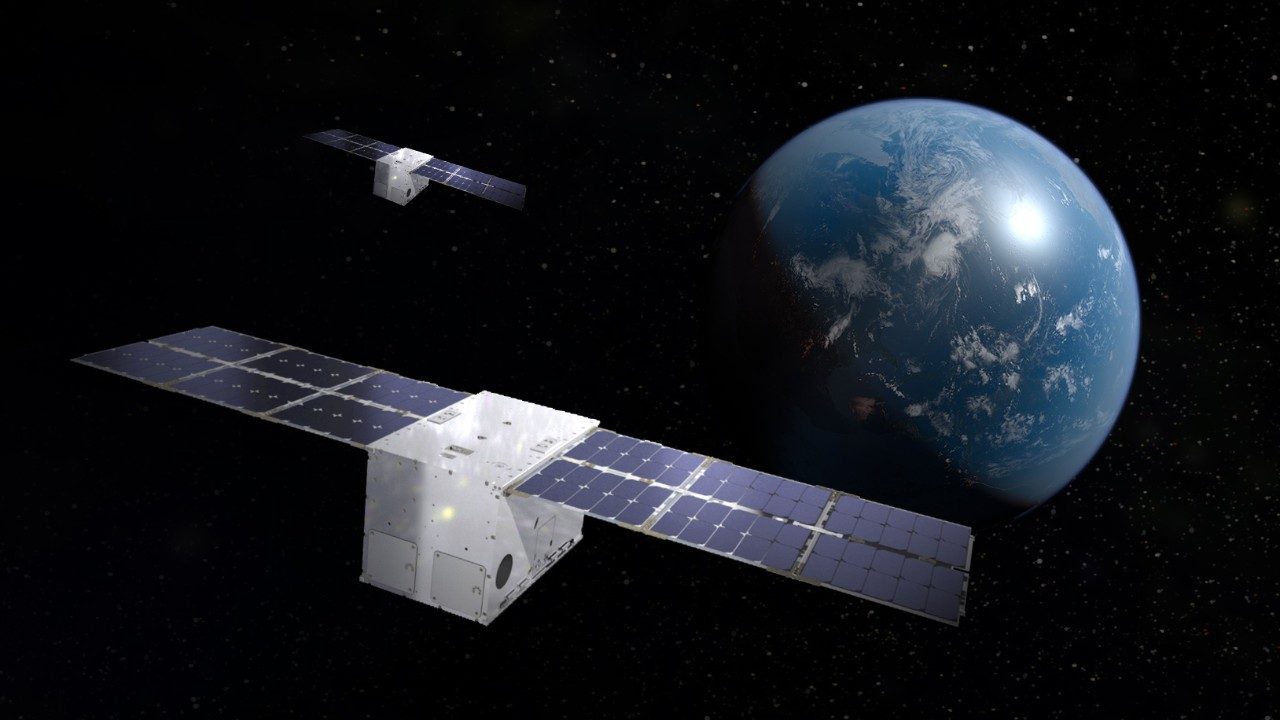Ships patrolling the seas, battalions headquartered on the ground, squadrons of bombers, constellations of satellites and cybersecurity measures -- those are the some of the many diverse elements of the 21st century battlespace being connected and defended.
As customer engagement leader for Lockheed Martin Space’s Mission Solutions, Michelle Waychoff understands the vital roles of all those multiple capabilities. But she is also focused on a single component – the individual warfighter.
Michelle’s background as a U.S. Army veteran, retiring in 2018 as a First Sergeant after 21 years of service, gives her unique insight and empathy as she works to ensure that Lockheed Martin Space teams understand customer needs and provide solutions that not only have high technical and financial value but also protect and defend that individual warfighter.
“I always keep the warfighter – not plural – on the ground as a single human being at the forefront of everything that I recommend or suggest and then help create,” she says. “Because I’ve been that warfighter on the ground, having that perspective really changes how you look at technology, the way it's developed, the way it's used, acquired and improved. It's a very different perspective than someone who's never been in the heat of the battle.”
Michelle brings that perspective to all aspects of her role. “What really matters at the end of the day is that warfighter’s life is on the line, either because of something they're using that we've created, or because of somebody who is making a decision based off of something that we've created.”
Defense Beyond Earth

In the future – that individual warfighter still needs to be protected – along with other human lives – far beyond Earth.
“There’s always going to be a ground component as we take capabilities farther out in space, whether it’s on Earth, or the surface of the Moon, Mars or another planet, or even the surface of an asteroid, whether or not you refer to that as the ‘ground,’” Michelle says.
Ground systems are the collective computing, storage and transmission facilities that command satellites, analyze intelligence from satellite sensors, and lead to new discoveries in space. Technology advancements are changing how we think about ground – automating manual processes and shifting where that processing happens to space.
“Many of the capabilities we develop to support from the ground are going to be used in a different fashion from different parts of space.”
If there is conflict or outright war in space, that will mean “there’s a human being on the ground somewhere who has a vested interest in knowing what is happening,” she notes. “They're going to use a capability on the ground to do that. JADO (Joint All Domain Operations) is connecting everything, but there will still be ground components.”
Tying the Digital Threads Together
Michelle sees “the digital thread touching everything” in the new battlespace -- from artificial intelligence and machine learning to cybersecurity.
“We are making investments on the cyber front to ensure that as we weave that digital thread through everything we do, right down to the chip component of a circuit card, that we are taking into consideration how to mitigate any cyber threats that might exist.”
Lockheed Martin’s leadership in digital transformation tools like digital twin and software factories allows for faster response to mission needs. “The effort we are putting into agile and DevSecOps is definitely a needle-mover for addressing warfighter requirements,” she adds. “It’s a needle-mover because we can build and deploy new features warfighters need much faster through development sprints and continuous customer feedback.”
So are war games. “We were taught to train as we fight. By developing tools that simulate a warfighting environment as realistically as possible, we are allowing warfighters to do that and making it more likely that they will make the right decision in an actual crisis.”
Making Sense of Data
Lockheed Martin’s 5G.MIL® Solutions offer a key way to provide the advanced military communications necessary for a JADO approach. By integrating commercial 5G standards with existing military communications and datalinks, warfighters have more effective access to data anywhere, including contested and denied environments. “5G.MIL® from Space can reach deep behind enemy lines with faster, more reliable ultra-secure connections. We’re working across Lockheed Martin to ensure 5G.MIL interoperability between our platforms – whether it’s an F-35 or an advanced satellite.”
Quantum computing and what Lockheed Martin is doing in that area is also going to be a “huge player going forward.” Why quantum computing – because it’s unbelievably fast and secure. Michelle explains, “It’s virtually impossible, currently, to decode or hack a quantum computer because of the sheer amount of computer power and time you would need – the data would be stale before an adversary could access it.”
Co-Existing in Space
How will global powers manage domain and power issues in space? Michelle says creating a NATO-like model might be a possible answer.
“There are definitely geostrategic interests at play,” she says. “Everyone wants to put people on the Moon and acknowledges the fact that there are resources there, on asteroids and elsewhere. How are we and other countries going to claim those resources?”
An organization that establishes protocols and policies could help. “If you look at the NATO military organization, members sign treaties and pacts on how you're going to behave and operate, especially at a time of war.”
“Humans are creatures of habit, so I think we will take the concepts like those we employ with NATO, ones that we are comfortable with here on Earth, and apply them to issues in the space domain,” she says.
Top of Mind
No matter where the future of space takes Michelle, she will keep her focus on the warfighter, helped by two reminders she keeps in her office.
“We get caught up in politics and money and bragging rights and egos as we’re developing things,” she says. “But I have a picture of some of my battle buddies from Iraq as well as a team poster we made while we were all deployed."
“All I have to do is look at that, especially if I’m frustrated with something I’m working on, and it reminds me that they’re the reason why I’m doing what I’m doing, and that doesn’t change whether we’re on Earth or Mars.”
In addition to enabling mission success for the 21st century warfighter, Michelle looks forward to space becoming more accessible to private individuals.
“Domestic civilian space travel really excites me – the idea of taking my family out into space for a vacation,” she says. “I hope all the technology advances that we are working on will become reality as we move into the next 10 or 20 years.”

Interested in Learning More...







